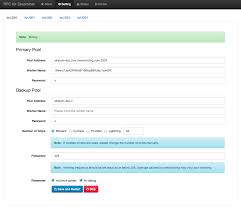
Sgminers is being sent by folks but no one would have the capacity to maintain track of who'd paid what, unless someone maintains an archive of these trades. It is the miners' occupation write them in a general ledger, and to support those trades.
It may be used to investigate any trade made at any point in the network, between any sgminer addresses. Every time a fresh block of trades is created, it's added creating an increasingly long record of the trades that ever happened to the sgminer network. A continuously updated duplicate of the block is provided to everybody who sgminer config participates, so they understand what's happening.
However a general ledger must be trusted, and this all is held. Just how can we be certain that the block chain remains intact, and is tampered with?
Miners set a block of transactions through a procedure when it is created. The miners use a mathematical formula to it, and require the data in the block, turning it into something different. That something is a much shorter, apparently random sequence of numbers and letters known as a hash. This hash is stored in the end, in addition to the block.
Hashes have some properties that are intriguing. It is not difficult to create a hash from an accumulation of information just like a sgminer block, but it is almost impossible to work out exactly what the data was only by studying the hash. And while it is hardly difficult to create a hash from lots of information, each hash is exceptional. A sgminer block's hash will change entirely in case you change only one character in it.
The trades aren't simply used by miners in a block to create a hash.
Because the hash of each block is created utilizing the hash of the block it becomes a digital variant of a wax seal. It affirms this block - and every block - is valid, since if it was tampered with by you, everyone would understand.
In the event you attempted to fake a trade by altering a block that had recently been saved in the block chain, this could alter the hash of that block. If a person checked the credibility of the block by running the hashing function onto it, the'd realize the hash was distinct in the one saved along with that block. The block would be immediately seen as a forgery.
So the hash of the following block would be made by tampering using a block erroneous, also. That will continue all of the way down the chain.